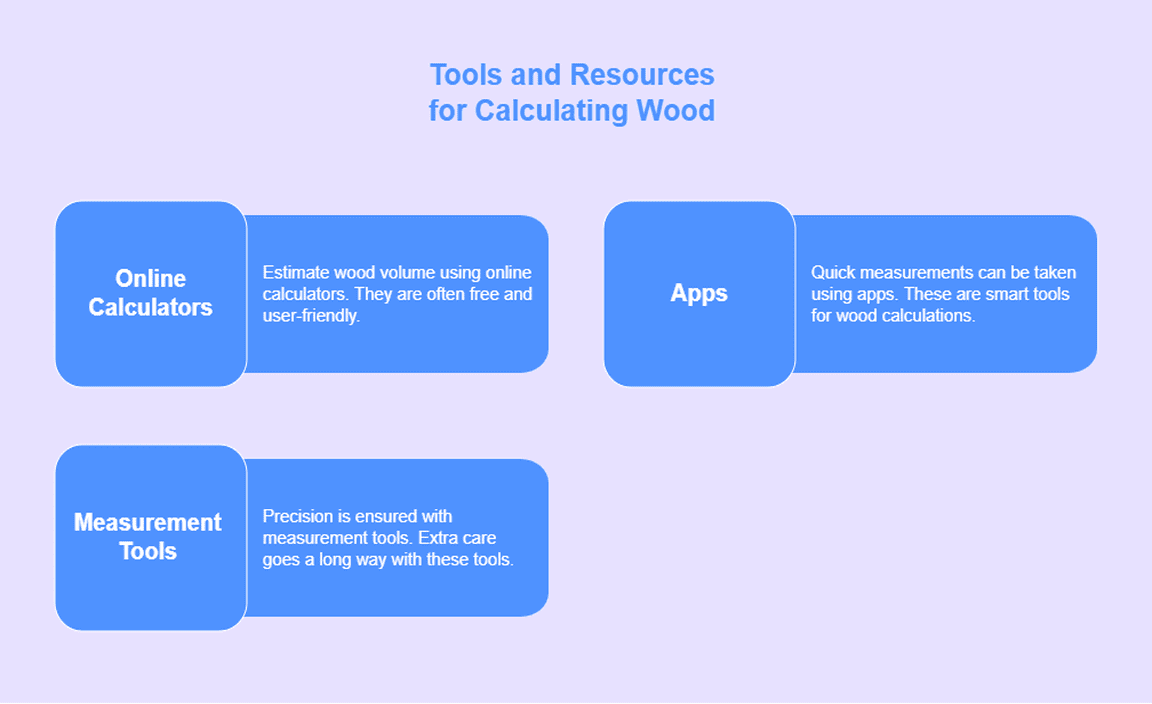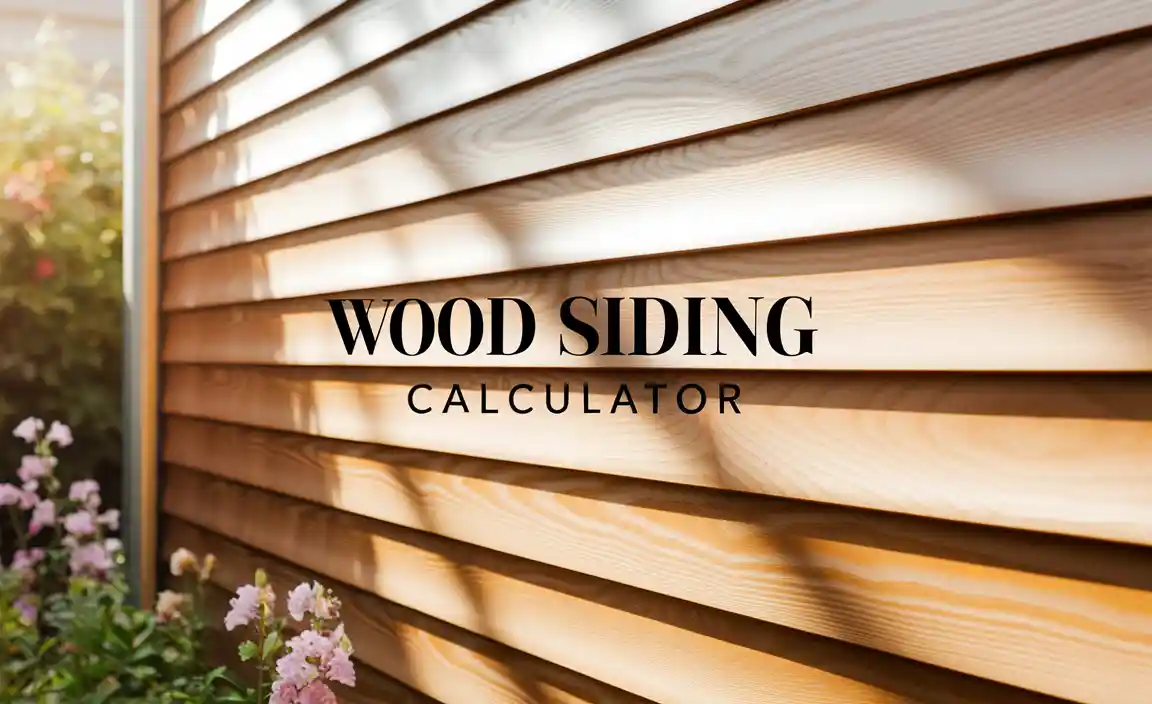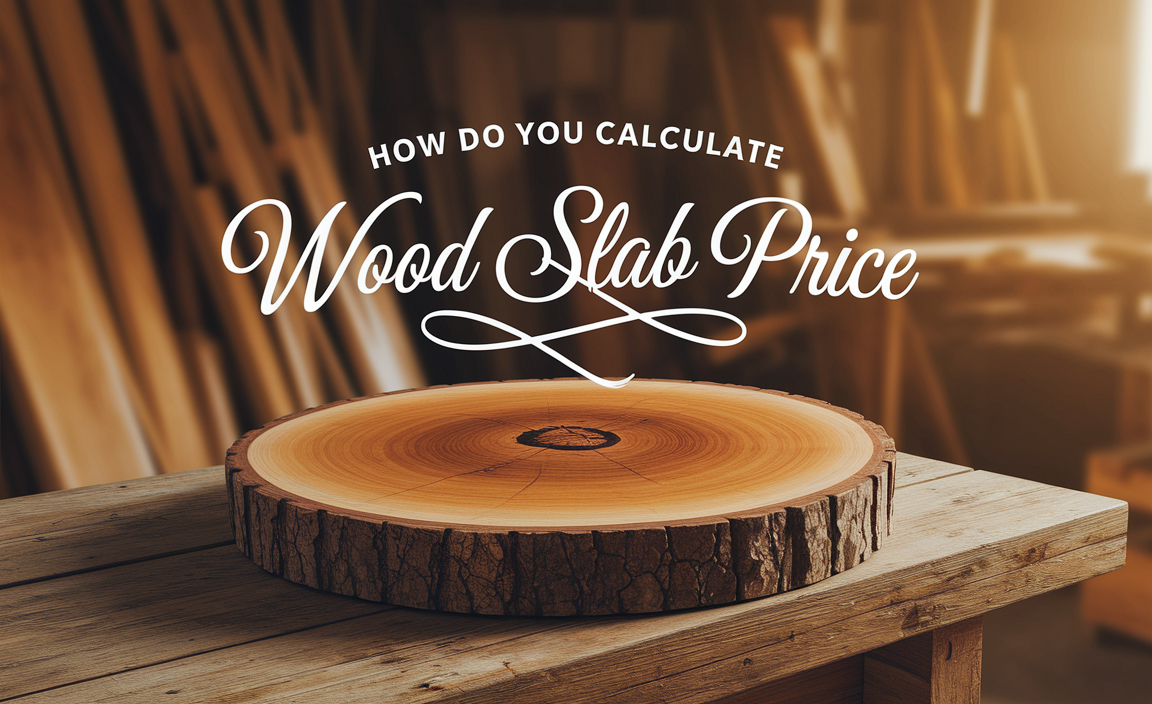Have you ever wondered how builders decide the amount of wood needed for a project? It’s not just guesswork; they use a special tool called the wood calculation formula. This formula helps people figure out the right quantity of wood for things like furniture, floors, or even whole homes. Imagine trying to build a treehouse without knowing how much wood you need.
It could lead to a pile of wasted materials or, worse, a treehouse that never gets built! Fun fact: Did you know that the average tree can provide enough wood for two pieces of furniture? By learning the wood calculation formula, you can easily understand how to measure and plan ahead. Let’s dive into the world of wood calculation and discover how this formula can help you in your next building adventure!

Table of Contents
Understanding The Wood Calculation Formula For Accurate Estimation

Understanding the wood calculation formula is important for anyone working with wood. This simple method helps you measure the amount of wood needed for your projects. Using the right formula ensures accuracy and prevents waste. Have you ever bought too little or too much wood? Knowing how to calculate your needs can save you time and money. Remember, proper measurements lead to a successful outcome, whether you’re building furniture or renovating your home!
Understanding the Basics of Wood Measurement
Explanation of key terms (board feet, cubic yards, etc.). Importance of accurate measurements in woodworking and construction. Wood measurement is essential for building and crafting. Two key terms are board feet and cubic yards. A board foot measures lumber volume, while a cubic yard measures bulk materials. Understanding these terms helps prevent mistakes that could make your new bookshelf wobble like a dancing penguin. Accurate measurements ensure you buy the right amount of wood and avoid wasting money. Remember, even the best carpenter can’t fix a cut that’s too short!
| Measurement Term | Description |
|---|---|
| Board Feet | Volume of lumber equal to a 1-foot length of a board that is 1 foot wide and 1 inch thick. |
| Cubic Yards | Volume measurement for bulk materials like concrete, equivalent to a cube with sides of 1 yard. |
The Wood Calculation Formula Explained

Breakdown of the wood calculation formula components. Examples of different formulas used for various wood types. The wood calculation formula helps you determine how much wood you need. It includes different parts: size, type, and price. For example, to find the volume of wood, you can use this formula:
- Volume = Length × Width × Height
Different wood types may use different methods. For instance:
- Plywood uses the same volume formula.
- Logs may need measuring in cubic feet.
Knowing the right formula saves time and money!
What is the wood calculation formula?
The wood calculation formula helps you find the wood’s volume and cost. This makes planning easier and helps get the right amount.
Common Applications of the Wood Calculation Formula
Use in furniture making. Application in construction and carpentry projects.
The wood calculation formula is like a magic trick for builders and furniture makers. In furniture making, it helps to figure out how much wood is needed for chairs, tables, and even fancy bookshelves. Imagine trying to make a table but finding out you have one leg too short! That’s where the formula saves the day.
In construction and carpentry projects, this formula is essential too. It makes sure that walls are sturdy and roofs don’t collapse. Builders use it to plan everything just right. After all, nobody wants their house to be like a wobbly Jenga tower! So, whether you are building or crafting, this formula is your best friend.
| Application | Benefit |
|---|---|
| Furniture Making | Saves wood and avoids mistakes |
| Construction | Ensures safety and strength |
Tools and Resources for Calculating Wood

Online calculators and apps. Measurement tools necessary for precision. Smart tools can make wood calculations easy. Online calculators and apps are great for quick estimates. Many are free and user-friendly, like a friendly squirrel helping you out. Don’t forget about your trusty measuring tape and other precision tools. They ensure your dimensions are spot-on. A little extra care goes a long way!
| Tool Type | Example | Use |
|---|---|---|
| Online Calculators | Calculator Soup | Estimate wood volume |
| Apps | Wood Volume Calculator | Quick measurements |
| Measurement Tools | Measuring Tape | Precision |
With the right tools, your projects will not only be accurate but also fun. Remember, measuring twice and laughing once will save you time!
Factors Affecting Wood Calculation
Variations in wood species and grain patterns. Moisture content and its impact on measurements.
Wood calculation can get tricky, and a few things shake up the results. First, each type of wood has its own charm and quirks. For example, oak is like that reliable friend, while pine is more playful and bendy. Next, we have moisture content. If wood drinks too much water, it swells like a sponge at a water park! This can really mess with measurements. Here’s a quick summary:
| Factor | Effect |
|---|---|
| Wood Species | Different growth patterns and density |
| Grain Patterns | Affects strength and appearance |
| Moisture Content | Too much can lead to shrinkage or swelling |
When you calculate wood, keep these factors in mind. They can change your results faster than a magician at a birthday party!
Step-by-Step Guide to Perform Wood Calculations

Detailed walkthrough of calculating wood dimensions. Practical examples for handson learning. Calculating wood dimensions can be simple and fun! First, measure the length, width, and height of the wood. Multiply these numbers to find the volume. Here’s a handy formula: Volume = Length x Width x Height. Let’s say your board is 2 feet long, 1 foot wide, and 0.5 feet high. That means the volume is 1 cubic foot. Want a practical twist? Here’s a quick table to help:
| Dimension (ft) | Calculation | Volume (cubic ft) |
|---|---|---|
| 2 x 1 x 0.5 | 2 x 1 x 0.5 = 1 | 1 |
Easy peasy, right? Now you can impress your friends with your math skills, or at least make them giggle when you show them how to stack wood like Tetris pieces!
Common Mistakes in Wood Calculations and How to Avoid Them
Frequent errors made by beginners. Tips for doublechecking calculations to ensure accuracy.
Many beginners trip over common mistakes in wood calculations. One frequent error is miscalculating measurements. It’s crucial to always double-check numbers. A fun tip? Use a calculator instead of counting on fingers. Trust me, they can add faster! Here’s a quick table to remember key points:
| Mistake | Solution |
|---|---|
| Wrong dimensions | Measure twice, cut once! |
| Forgetting to account for waste | Always include extra for errors! |
| Skipping units | Be clear: inches or feet? |
If you keep these tips close, your wood calculations will be spot on, and you’ll chop it like a pro! Remember, double-check and laugh at mistakes—it’s all part of the learning fun!
Expert Tips for Improving Your Wood Calculation Skills
Best practices from professionals in the woodworking industry. Continuing education resources for advanced learning.
Improving your wood calculation skills can be simple with the right tips. Professionals advise hands-on practice. Measuring accurately and using reliable tools are key. Take part in workshops or online courses for growth. These learning opportunities can expand your knowledge. Join woodworking forums too; they are full of advice from experts. Connect with others, ask questions, and share experiences!
What are the best practices for wood calculations?
Best practices include using precise measuring tools, practicing regularly, and learning from experienced woodworkers.
Top Resources for Learning:
- Online courses
- Local workshops
- YouTube tutorials
- Woodworking magazines
Conclusion
In summary, the Wood Calculation Formula helps you measure the amount of wood you need for projects. By understanding this formula, you can save money and reduce waste. We encourage you to practice using it for your next task. Explore more resources or ask someone with experience to guide you. Happy woodworking!
FAQs
Sure! Here Are Five Related Questions On The Topic Of Wood Calculation Formulas:
Sure! Here are five related questions about wood calculation formulas: 1. What is a wood calculation formula? A wood calculation formula helps us find out how much wood we need for projects. 2. Why do we need to measure wood? We need to measure wood to make sure we have enough for our projects. 3. How do you find the volume of wood? To find the volume, we multiply the length, width, and height. 4. Can wood shrink or expand? Yes, wood can shrink when it dries and expand when it gets wet. 5. How do I know how much wood to buy? You can use formulas to calculate the amount of wood needed before buying it.
Of course! Please provide the question you’d like me to answer.
What Is The Formula For Calculating The Volume Of Wood In Cubic Feet Or Cubic Meters?
To find the volume of wood, you can use a simple formula. First, measure the length, width, and height of the wood. Then, multiply these three numbers together. For cubic feet, you use feet. For cubic meters, use meters. The formula is: Volume = Length × Width × Height.
How Do You Determine The Board Feet Measurement For A Piece Of Lumber?
To find the board feet of lumber, you first measure its length, width, and thickness. You multiply these three numbers together. Then, divide the result by 144. This gives you the board feet measurement. It tells you how much wood you have!
What Factors Should Be Considered When Calculating The Weight Of A Specific Type Of Wood?
When calculating the weight of a specific type of wood, you should consider its size, shape, and moisture. Larger pieces of wood weigh more than smaller ones. Different wood types can be heavier or lighter. Also, wet wood weighs more than dry wood because of the water inside it. We can add all these details together to find the total weight.
How Can You Use Wood Calculation Formulas To Estimate The Number Of Boards Needed For A Construction Project?
You can use wood calculation formulas to figure out how many boards you need for a project. First, you measure the area where the boards will go. Then, you find out the size of each board. Next, you divide the total area by the size of one board. This gives you the number of boards you need.
What Is The Significance Of Adjusting Wood Volume Calculations For Moisture Content And How Is It Done?
When we measure wood, its weight can change because of moisture. If there’s too much water, the wood feels heavier. Adjusting for moisture helps us know the true amount of wood we have. We check the wood’s moisture level and use a formula to change the volume based on that. This way, we get a better idea of how much wood we really have!
Resource:
-
Understanding Lumber Sizes: https://www.familyhandyman.com/project/how-to-understand-lumber-sizes/
-
Moisture content in wood and its effects: https://www.wood-database.com/wood-articles/wood-and-moisture/
-
Board feet calculation examples: https://www.popularwoodworking.com/techniques/how-to-calculate-board-feet/
-
Online wood volume calculator: https://www.omnicalculator.com/construction/wood-volume







